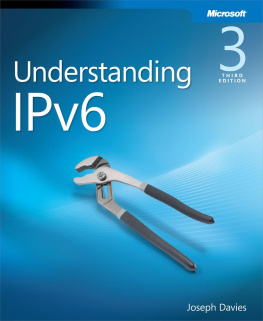Liu - DNS and BIND on IPv6
Here you can read online Liu - DNS and BIND on IPv6 full text of the book (entire story) in english for free. Download pdf and epub, get meaning, cover and reviews about this ebook. year: 2011, publisher: OReilly Media, genre: Romance novel. Description of the work, (preface) as well as reviews are available. Best literature library LitArk.com created for fans of good reading and offers a wide selection of genres:
Romance novel
Science fiction
Adventure
Detective
Science
History
Home and family
Prose
Art
Politics
Computer
Non-fiction
Religion
Business
Children
Humor
Choose a favorite category and find really read worthwhile books. Enjoy immersion in the world of imagination, feel the emotions of the characters or learn something new for yourself, make an fascinating discovery.
- Book:DNS and BIND on IPv6
- Author:
- Publisher:OReilly Media
- Genre:
- Year:2011
- Rating:4 / 5
- Favourites:Add to favourites
- Your mark:
DNS and BIND on IPv6: summary, description and annotation
We offer to read an annotation, description, summary or preface (depends on what the author of the book "DNS and BIND on IPv6" wrote himself). If you haven't found the necessary information about the book — write in the comments, we will try to find it.
If youre preparing to roll out IPv6 on your network, this concise book provides the essentials you need to support this protocol with DNS. Youll learn how DNS was extended to accommodate IPv6 addresses, and how you can configure a BIND name server to run on the network. This book also features methods for troubleshooting problems with IPv6 forward- and reverse-mapping, techniques for helping islands of IPv6 clients communicate with IPv4 resources, and many other topics.
Liu: author's other books
Who wrote DNS and BIND on IPv6? Find out the surname, the name of the author of the book and a list of all author's works by series.














